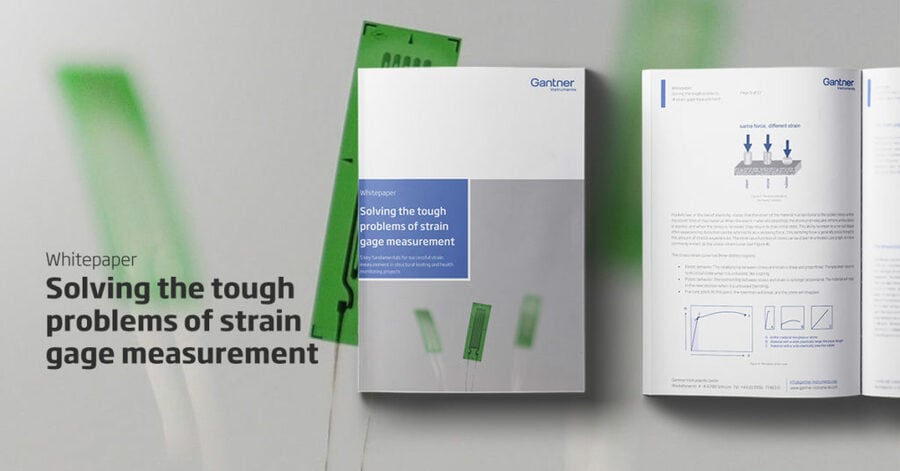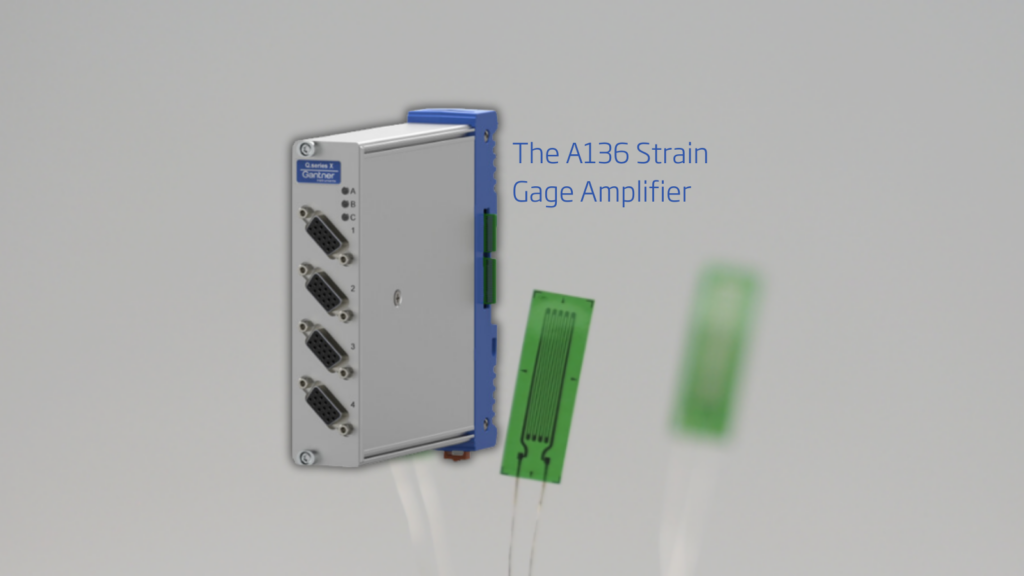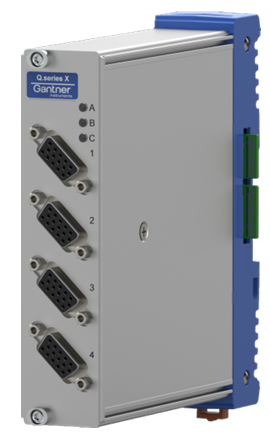The 10 V Strain Gage Excitation Evolution
The US has had a long-standing relationship with 10 V excitation in strain gage applications. Despite the tiny accuracy loss from the accompanying higher signal-to-noise ratio and heat induction, the North American market has, for decades, embraced 10 V excitation, shaping their calibration and quality standards around it. Such consistency ensures that transitions to newer technologies don’t disrupt existing protocols.
Modern engineering applications have a growing trend towards using 1000 ohm strain gages. Add to this mix the rise of semiconductor-based sensors in testing environments. These bridge-based sensors are designed primarily for pressure and flow measurement and demand a higher excitation voltage when compared to metal foil strain gages. Their adaptability in capturing high (20k-50k) and static low frequencies makes them indispensable in propulsion testing for the automotive and aerospace industries.
While the merits are compelling, it’s important to remember the increased power consumption and the potential damage if a strain gage excitation isn’t optimized. However, when you consider the overwhelming benefits especially in high-precision applications like aerospace, automotive engineering, or even noisy industrial environments, the A136’s compatibility for easily configurable excitation ranging from 1 V to 10 V shines.
Benefits of 10 V Excitation
- Higher signal-to-noise ratio: Achieve a higher signal-to-noise ratio, ensuring clarity even in noisy conditions.
- Increased sensitivity: Detect even minuscule changes in strain effortlessly.
- Sensor compatibility: 10 V excitation suits many strain gage systems, streamlining setup, and ensuring alignment with prevalent equipment.
Strain Gage Sensors & the 10 V Excitation Edge
While 10 V excitation isn’t a universal requirement for all strain gage sensors, certain categories distinctly benefit from it:
- Precision-Focused Strain Gages: Those pivotal in aerospace and automotive applications, where accuracy can’t be compromised.
- Gages Operating Amidst Disturbances: The enhanced signal clarity from 10 V excitation is a distinct advantage in industrial contexts laden with ambient noise.
- Real-time Strain Detectors: In situations demanding instantaneous readings, such as determining forces acting on test vehicles, 10 V excitation is pivotal.
- Sensors with Low Sensitivity: Using 10 V excitation is beneficial for these sensors as it aids in producing a higher output, optimizing the measurement results.
Among the array of sensors amplifying their efficacy using 10 V excitation, load cells, pressure transducers, and accelerometers stand out.
1000 Ohm Strain Gages & Bridge Completion Resistor Options
In contemporary engineering, the popularity of 1000 Ohm strain gages is on the rise, especially in the U.S. aerospace and automotive sectors. These industries continuously innovate with new-age composites that aim for strength and lightness. While producing these fibers remains consistent, fatigue testing of their unique compositions brings challenges due to the anisotropic nature of composites. This results in varying properties in different directions, complicating the understanding of stress-strain curves. Here, higher output can be beneficial.
However, the A136 doesn’t just cater to the 1000 Ohm market. It is also available in 120 / 350 Ohm version that offers built-in completion resistors for quarter/half bridges. Bridge completion resistors play a vital role in ensuring accurate measurements by compensating for missing elements in half or quarter-bridge configurations. ‘Shunting,’ or the process of adding a known resistor to the bridge circuit, is essential to determine sensitivity and calibrate the system.
Avoid turning your strain measurement into a temperature measurement!
Equip yourself with the knowledge to ensure precision every time. Our whitepaper highlights the challenges and solutions in strain measurement.
Where 10 V Excitation is Needed in Modern Applications
- Semiconductor-based Sensor Support: In aerospace and automotive engine testing, both legacy metal foil strain gage sensors and advanced semiconductor-based sensors are utilized. Semiconductor-based sensors require 10 V excitation which facilitates their faster response times, enabling real-time monitoring and control of pressure-related parameters, a task beyond traditional metal foil sensors. Such capabilities are becoming increasingly crucial for flight control systems and optimizing engine performance.
- Aerospace Flight Testing: As aircraft undergo rigorous tests, sensors need to provide real-time data under fluctuating conditions. 10 V excitation ensures data integrity and clarity, allowing engineers to make informed decisions on flight mechanics and structural integrity.
- Aerospace Structural Testing: 10 V excitation helps get a clearer and more precise look at how different parts, from wings to fuselage handle stress, resulting in a comprehensive evaluation of structural health and pinpointing stress concentrations across aircraft structures
- Automotive Durability Testing: Modern vehicles, especially electric ones, have complex architectures. Accurately measuring stress and strain on components like batteries, especially during rapid charging or discharging, requires the clarity and precision that 10 V excitation offers.
- High-Speed Trains & Infrastructure: As nations invest in hyper-fast rail systems, the track and carriage integrity are paramount. Sensors with 10 V excitation can measure dynamic loads at high speeds, ensuring safety and operational efficiency.
- Energy Sector: Wind turbines, for example, face dynamic loads. The blades, often spanning vast lengths, experience varying strains. Accurate data can help in predictive maintenance, ensuring these clean energy behemoths operate optimally.
As industries push boundaries, the need for precise, clear, and real-time strain or sensor data continues to grow. 10 V excitation in strain gage sensors is stepping up to meet this challenge, proving its worth in diverse, demanding applications.
Why the A136 Stands Out
The A136 is designed to support 120, 350, and 1000 Ohm bridge sensors, it comes with built-in completion resistors and is compatible with both 4- and 6-wire configurations. It delivers four channels at a 20 kHz sample rate per channel and 24-bit ADC strain amplification. With user-configurable excitation levels ranging from 1 V to 10 V and straightforward management of configuration, scaling, and filtering via GI.bench, the A136 seamlessly integrates with Q.stations and EtherCAT systems.
Access the comprehensive A136 datasheet here.
Challenges in Strain Measurement?
Given the evolving demands of the aerospace and automotive sectors, the A136 stands out as a dependable tool. Choosing the A136 means investing in compatibility and seamless integration for various measurement applications.

More articles
Empowering Researchers: Simplifying Research and Enhancing Performance with GI.bench and GI.cloud
Discover how Gantner Instruments enhances heat pump performance and streamlines research, driving innovation in renewable energy and demand side management.
Read more...SHMII 2025: Real-Time Structural Monitoring in Focus
Gantner Instruments is participating in the 13th International Conference on Structural Health Monitoring of Intelligent Infrastructure (SHMII), scheduled to take place from September 1 to 5, 2025, in Graz, Austria.
Read more...3 ways advanced DAQ solutions help the aviation industry transition to a sustainable future
By 2050 we need to become a carbon-neutral society, and the aviation sector needs to contribute. While flying less can help reduce emissions, we have options for cleaner air travel. For one, we could power our flight with electricity or hydrogen, which are no longer ideas in some futuristic science fiction novel. Rather, they are on the brink of generating a shift in aviation technology.
Read more...PV Performance Modeling Collaborative Workshop 2025
May 13–14, 2025 | Hotel Albuquerque at Old Town, Albuquerque, NM, USA
Read more...
